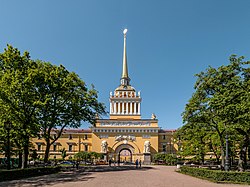Buildings and structures
Buildings


- January 30 – The original span of the Lower Trenton Bridge over the Delaware River in the United States is opened.
- August 15 – Construction work starts on the Arc de Triomphe in Paris, commissioned by Napoleon Bonaparte from Jean-François Chalgrin. Also this year a competition for design of a Temple de la Gloire de la Grande Armée is won by Claude Étienne de Beaumont but Napoleon instead commissions Pierre-Alexandre Vignon to construct what will become La Madeleine, Paris.
- December 1 – The Olympic Theatre opens in Drury Lane, London.
- December 6 – The African Meeting House (Boston, Massachusetts), designed by Asher Benjamin, is dedicated.
- The Old West Church (Boston, Massachusetts), designed by Asher Benjamin, is built.
- The Circular Congregational Church in Charleston, South Carolina, designed by Robert Mills, is completed.
- The Basílica del Juramento de San Rafael in Córdoba, Andalusia, is completed.
- Iglesia de la Inmaculada in Heredia, Costa Rica, is completed at about this date.
- Latrobe Gate to Washington Navy Yard in Washington, D.C., designed by Benjamin Henry Latrobe, is completed.
- Gore Place, Waltham, Massachusetts, probably incorporating designs by Joseph-Guillaume Legrand, is completed.
- Württembergisches Palais in Regensburg, Bavaria, is completed by Emanuel Herigoyen.
- Sándor Palace, Budapest, designed by Mihály Pollack, is completed.
- New Sloswicke's Hospital in Retford, Nottinghamshire, England, is built.
- New Royal Military Academy, Woolwich, England, designed by James Wyatt, is opened.
- The Admiralty building, Saint Petersburg is designed by Andreyan Zakharov; it will be completed in 1823 after his death.
- Rosneath House in Scotland, designed by Joseph Bonomi the Elder is finished.
- Demolition of al-Baqi.
